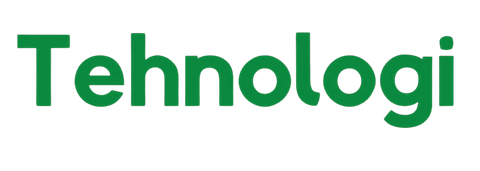
Cash flow is the heartbeat of any business. While revenue gets all the attention, it’s cash flow—the movement of money in and out of your business—that keeps the lights on. A business with poor cash flow can quickly face financial strain, even if it’s profitable on paper. The key to long-term financial stability is mastering cash flow management.
In this guide, we’ll explore actionable strategies to manage business cash flow effectively, ensuring your company stays financially healthy and ready to grow.
Why Cash Flow Matters More Than Profit
Think of cash flow as the fuel for your business engine. Even if your car (business) is fast (profitable), it won’t go far without fuel (cash).
Key Facts:
- Positive Cash Flow: More money coming in than going out.
- Negative Cash Flow: More money going out than coming in (danger zone).
- Profit ≠ Cash Flow: A business can show a profit on paper but still struggle to pay bills if cash isn’t managed properly.
Step 1: Understand Your Cash Flow
To manage cash flow, you need a clear picture of how money moves through your business.
Actionable Steps:
- Create a Cash Flow Statement:
- Operating Activities: Day-to-day revenue and expenses.
- Investing Activities: Money spent on or earned from long-term assets.
- Financing Activities: Loans, equity, or dividends paid.
- Track Cash Flow Regularly:
Use accounting software like QuickBooks, Xero, or Wave to generate real-time cash flow reports.
Example:
If your business earns $20,000 monthly but spends $22,000, you’re in negative cash flow—time to act fast.
Step 2: Build a Cash Flow Forecast
A cash flow forecast helps you predict future inflows and outflows, allowing you to prepare for potential shortfalls.
Actionable Steps:
- List Expected Inflows:
Include sales revenue, loan disbursements, and other income sources. - List Expected Outflows:
Account for rent, payroll, supplies, taxes, and debt repayments. - Adjust for Seasonality:
If your business has busy and slow seasons, plan accordingly.
Example:
A retail store might predict higher inflows during the holiday season but prepare for slower months in January and February.
Step 3: Speed Up Receivables
Getting paid faster can dramatically improve cash flow.
Actionable Steps:
- Invoice Immediately:
Send invoices as soon as goods or services are delivered. - Offer Early Payment Discounts:
Incentivize clients to pay quickly with discounts like 2% off if paid within 10 days. - Use Online Payment Solutions:
Platforms like PayPal, Stripe, or Square make it easy for clients to pay on time.
Example:
If you invoice $10,000 monthly and half your clients pay early for a 2% discount, you’ll improve cash flow while absorbing a small cost.
Step 4: Control Your Payables
Managing how and when you pay bills is just as important as collecting receivables.
Actionable Steps:
- Negotiate Payment Terms:
Request longer payment terms from suppliers (e.g., 60 days instead of 30). - Prioritize Payments Strategically:
Pay critical bills like payroll and utilities first. Delay non-essential expenses when necessary. - Use a Business Credit Card:
This can provide short-term flexibility, but be cautious of interest rates.
Example:
If you negotiate a 30-day extension on a $5,000 supplier payment, you gain more time to collect revenue and cover other expenses.
Step 5: Maintain a Cash Reserve
An emergency cash reserve acts as a financial safety net during slow periods or unexpected expenses.
Actionable Steps:
- Save a Percentage of Revenue:
Set aside 5–10% of monthly revenue into a separate account. - Cut Non-Essential Expenses:
Redirect savings toward building your reserve. - Target 3–6 Months of Operating Costs:
This provides a cushion during downturns.
Example:
If your monthly expenses are $10,000, aim for a reserve of $30,000 to $60,000.
Step 6: Reduce Unnecessary Expenses
Cutting costs doesn’t have to mean sacrificing quality.
Actionable Steps:
- Audit Expenses:
Identify areas where spending can be reduced, like unused subscriptions or overpriced suppliers. - Switch to Variable Costs:
Where possible, move from fixed to variable expenses (e.g., outsourcing instead of full-time hires). - Renegotiate Contracts:
Discuss better rates with vendors or service providers.
Example:
Switching from a fixed $500/month software subscription to a $300 pay-as-you-go plan could save $2,400 annually.
Step 7: Use Technology to Streamline Cash Flow Management
The right tools can save you time and help avoid costly mistakes.
Recommended Tools:
- Accounting Software: QuickBooks, Xero, or FreshBooks for tracking income and expenses.
- Cash Flow Forecasting Tools: Float, PlanGuru, or Pulse for advanced forecasting.
- Payment Gateways: Use Stripe or PayPal for faster, automated receivables.
Example:
A restaurant using an integrated POS system like Square can automatically track daily cash flow and identify trends.
Step 8: Plan for Growth Without Jeopardizing Cash Flow
Growth is exciting, but it often requires upfront investment that can strain cash flow.
Actionable Steps:
- Grow Gradually:
Avoid overextending by scaling operations incrementally. - Secure Financing Early:
Use loans or lines of credit to fund growth while maintaining cash reserves. - Monitor ROI:
Ensure investments in growth (e.g., marketing campaigns) generate positive returns.
Example:
If expanding your office space costs $20,000, forecast how long it will take to recoup the expense through increased revenue.
Step 9: Regularly Review and Adjust
Cash flow management isn’t a one-time effort—it’s an ongoing process.
Actionable Steps:
- Schedule Monthly Reviews:
Examine your cash flow statement and compare it against your forecast. - Identify Red Flags Early:
A sudden drop in inflows or spike in expenses should trigger immediate action. - Adjust Accordingly:
Shift priorities based on real-time data.
Example:
If cash inflows dip during a slow sales quarter, pause non-essential spending like employee perks or equipment upgrades.
Recommended Resources for Cash Flow Management
- Books:
- “Profit First” by Mike Michalowicz.
- “Simple Numbers, Straight Talk, Big Profits” by Greg Crabtree.
- “Financial Intelligence” by Karen Berman and Joe Knight.
- Courses:
- “Managing Cash Flow” (LinkedIn Learning).
- “Finance Essentials for Entrepreneurs” (Coursera).
- Podcasts:
- Smart Passive Income with Pat Flynn.
- The Indicator from Planet Money.
Final Thoughts
Mastering cash flow management is the cornerstone of long-term financial stability for any business. By understanding your cash flow, forecasting future needs, and leveraging tools to streamline processes, you can build a strong financial foundation.
Remember: it’s not about how much you earn; it’s about how effectively you manage what you have. Start implementing these strategies today to ensure your business thrives tomorrow!















